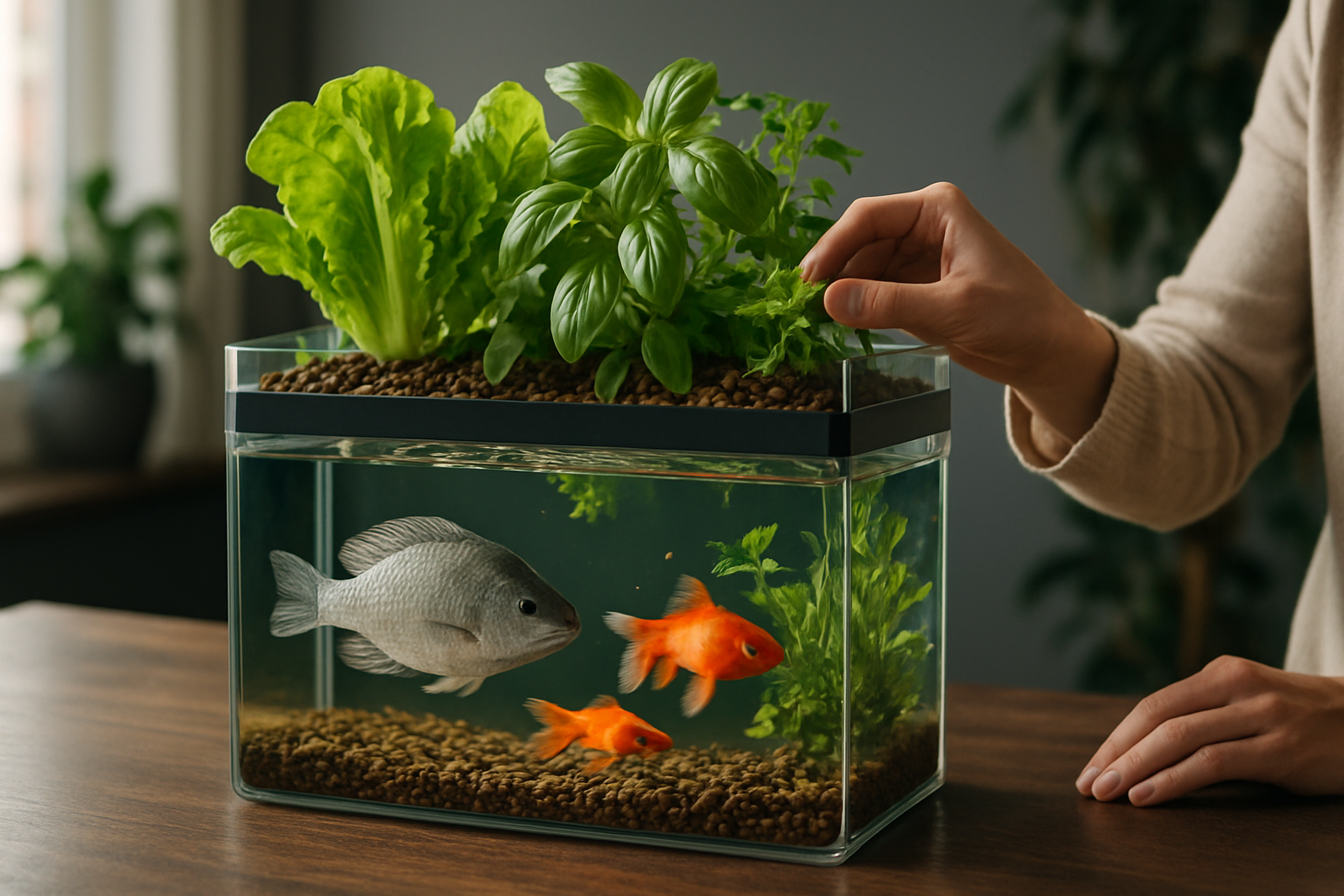Aquaponic Pet Care: The Future of Sustainable Home Aquariums
Imagine a world where your aquarium not only houses beautiful fish but also grows fresh herbs and vegetables for your kitchen. This is the exciting reality of aquaponic pet care, a groundbreaking approach that combines aquaculture with hydroponics. As we delve into this innovative system, we'll explore how it's revolutionizing home aquariums and offering a sustainable solution for pet owners and gardening enthusiasts alike.

The Origins of Aquaponic Pet Care
Aquaponics as a concept dates back thousands of years, with roots in ancient civilizations like the Aztecs, who cultivated crops on floating islands fertilized by fish waste. However, the modern application of aquaponics in home aquariums is a relatively recent development. In the 1970s, researchers began exploring the potential of combining fish farming with hydroponic plant cultivation, laying the groundwork for today’s aquaponic pet care systems.
The transition from large-scale commercial aquaponics to home-based systems gained momentum in the early 2000s. Hobbyists and environmentally conscious pet owners started experimenting with small-scale setups, adapting the principles of commercial aquaponics to suit domestic environments. This shift marked the birth of aquaponic pet care as we know it today, offering a sustainable alternative to traditional aquarium maintenance.
How Aquaponic Pet Care Works
At the heart of aquaponic pet care is a beautifully simple cycle. Fish in the aquarium produce waste, which is converted by beneficial bacteria into nitrates. These nitrates serve as nutrients for plants growing in a connected hydroponic system. As the plants absorb these nutrients, they effectively clean the water, which is then recirculated back to the fish tank.
This closed-loop system offers numerous benefits. It significantly reduces the need for water changes, as the plants continuously filter the water. The result is a more stable aquatic environment for the fish and a constant supply of nutrients for the plants. Additionally, the system requires minimal input once established, making it an attractive option for busy pet owners or those looking to reduce their environmental footprint.
Choosing the Right Fish and Plants
Selecting appropriate fish species is crucial for a successful aquaponic pet care system. While many aquarium fish can thrive in these setups, some species are particularly well-suited. Tilapia, goldfish, and koi are popular choices due to their hardiness and ability to produce ample waste for plant nutrition. However, ornamental species like guppies, tetras, and bettas can also adapt well to aquaponic environments, offering aesthetic appeal alongside functionality.
When it comes to plants, the options are surprisingly diverse. Leafy greens like lettuce, spinach, and herbs such as basil and mint are excellent choices for beginners due to their rapid growth and low nutrient requirements. As systems become more advanced, pet owners can experiment with fruiting plants like tomatoes or peppers, creating a truly productive aquarium-garden hybrid.
The Environmental Impact of Aquaponic Pet Care
One of the most compelling aspects of aquaponic pet care is its potential for environmental sustainability. Traditional aquariums often require frequent water changes, consuming significant amounts of water and energy. In contrast, aquaponic systems use up to 90% less water than conventional methods, as the water is continuously recycled and purified by the plants.
Moreover, these systems reduce the need for chemical fertilizers in plant cultivation and minimize the use of artificial filters in aquariums. This not only decreases the environmental impact but also results in healthier fish and more nutritious plants. As concerns about water conservation and sustainable food production grow, aquaponic pet care offers a practical solution that addresses multiple environmental issues simultaneously.
The Economic Aspects of Aquaponic Pet Care
While the initial setup cost of an aquaponic system can be higher than a traditional aquarium, ranging from $200 for basic kits to over $1000 for more elaborate setups, the long-term economic benefits are significant. The reduced need for water changes, chemical treatments, and fish food (as some systems can incorporate fish feed production) leads to lower ongoing maintenance costs.
Furthermore, the ability to grow fresh produce at home can offset grocery expenses. Some enthusiasts have even turned their hobby into small-scale businesses, selling excess herbs and vegetables to local markets or restaurants. As the popularity of aquaponic pet care grows, we’re seeing an expansion in the market for specialized equipment and starter kits, making it increasingly accessible to a wider range of pet owners.
Challenges and Future Developments
Despite its many advantages, aquaponic pet care is not without challenges. Maintaining the delicate balance between fish health, plant growth, and water quality requires careful monitoring and occasional intervention. Pest management can also be tricky, as traditional pesticides can harm the fish. However, innovative solutions like beneficial insects and organic treatments are emerging to address these issues.
Looking to the future, we can expect to see further advancements in aquaponic pet care technology. Smart monitoring systems that use AI to maintain optimal conditions are already in development. There’s also growing interest in incorporating aquaponic principles into larger-scale urban agriculture projects, potentially transforming how we think about pet ownership and food production in cities.
As we face global challenges related to water scarcity, food security, and sustainable living, aquaponic pet care stands out as a promising solution. It offers a unique blend of companionship, environmental stewardship, and self-sufficiency. For pet enthusiasts and eco-conscious individuals alike, this innovative approach to aquarium keeping represents not just a hobby, but a step towards a more sustainable future.





